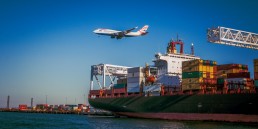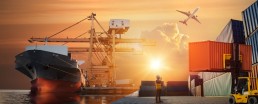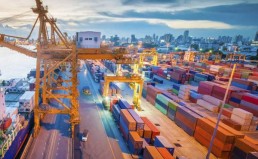ASA Shipping Update - November 2020
Please find below the latest ASA information in regards to the shipping situation both domestically and internationally.
Sydney Port Impacts
- ASA members should be aware that Port Congestion issues are now IMPROVING and down to 48 hrs in some cases on an Operator by Operator basis.
- Berthing - During September and October, many vessels departed late from Australia, so we are now seeing these vessels return to Australia off-window resulting in vessel
bunching in some terminals as well as rotation changes as shipping lines adjust schedules to meet windows or avoid waiting. - Due to these factors, as well as being in the traditional peak period for Landside Logistics, we are still seeing delays in container collection in certain circumstances.
Surcharge Update
- At this stage there are no updates as to when Port Congestion Surcharges will end. As recently reported by the IFCBAA Following discussions with many stakeholders, there are a number of moving
parts which need to be resolved. - EBA negotiations with MUA are still ongoing
- Despite the pause in protected industrial action, the threat of PIA recurring is still live.
- Svitzer Tugs are under PIA at their 16 ports from 29 Oct – 29 Nov - Svitzer PIA Notice Svitzer advises they can manage the situation by adjusting schedules while the PIA is in place
- Delays in ships accessing Port Botany stevedores are down to a few days, with ships slow sailing or at anchor to access their slot at Port Botany
- shipping lines continue to rearrange rotations with port omissions – some omitting Sydney, some omitting other ports to try to keep vessels on schedule
- ECPs are overflowing and the cost of holding stockpiled containers at ECPs is ongoing for the shipping lines
- Shipping lines are under pressure from overseas ports to repatriate empty containers ,despite increased exchanges of empty containers evacuated onto vessels, the volumes are not keeping pace with the arrival of
more containers. - Minimal prospect of a number of designated sweeper vessels clearing out a large number of boxes, the continued drip feed of empty containers onto those vessels which are calling Sydney won’t significantly
change the situation. - A bumper harvest now expected - export capacity out of Sydney may be under pressure for a while, impacting flexibility in designated types of empty boxes being evacuated
- Under the current circumstances, each shipping line will make their own decision regarding the duration of the PCS as it affects their business. In general, it appears that the shipping lines continue to monitor the situation for the time being.
International Ports
- Vessel congestion, Space and Equipment availability continue to be an issues for shipping.
- Delays are being consistently seen with many bookings being rolled due to vessel capacity and overbooking.
- Forty Foot equipment is still in high demand but short supply in most ports. Making shipment of goods very challenging for Traders and Mills alike.
- Shipping rates remain high and softening remains to be seen as highlighted by a recent announcement by MSC of a general rate increase of circa USD$1000 per Twenty Ft equivalent unit form December 1st.
- If the market accepts this remains to be seen but indicates that the possibility of further freight price increases can't be ruled out.
Office Closure - Friday 4th December 2020
To our valued customers,
Please note that all SILA Global offices will be closed from 12pm local time on Friday 4th December 2020 for system upgrades and maintenance.
We will reopen as per normal on Monday 7th December.
All offices will be unattended during this time, so please make arrangements accordingly.
If you have any questions please contact your local AU or NZ SILA Global representative.
Guide to importing for a small business
24/11/2020
If you have ever considered importing goods into Australia or watched an episode of Border Security you would know that we have very strict Customs and Quarantine laws in this country and it’s easy to make a costly mistake.
While Australian Border Force has information readily available on their website - between prohibited goods, duty and GST, rules of origin and concessions – it’s easy to get lost in all the jargon and legalities of the process, and hefty penalties can occur for incorrect lodgement.
And it does not end there – wharf storage and container detention are two more potentially costly hurdles that can easily catch the inexperienced off guard.
We know how hard it is running a small business - engaging the help of a freight forwarder is something that will save you precious time and money, allowing you to focus on your business.
Generally, any shipment over 100kg is best handled by a commercial freight forwarder to ensure its handled correctly, and all the necessary steps are followed.
What is a freight forwarder you ask? Generally they are not the ones physically moving the cargo themselves, but instead they act as intermediaries, using their established relationships with service providers and their in-depth knowledge to find the most reliable, efficient and economical way to get your cargo from A to B whilst ensuring it meets all the necessary Customs and Quarantine requirements.
Not all freight forwarders are the same, and with so many out there it is hard to pick the right one.
SILA Global is an Australian Trusted Trader – meaning we have completed necessary requirements set by Australian Border Force which give us basically a “tick of approval”. Shipments moved with us are given priority treatment at the border – faster customs processing and fewer interventions.
Once you source the goods and the supplier, a freight forwarder can assist with the next steps including:
- Terms of the sale (known as incoterms) to establish how much responsibility you will have for your cargo, and who is responsible for what costs along the way
- Negotiating freight rates
- Booking your cargo onto a vessel or flight
- Arranging insurance for your cargo
- Origin packing & transport & clearance
- Arrange and handle the necessary documentation
- Destination customs clearance
- Delivery and unpack of goods at destination
- Can arrange for warehousing/storage if required.
One of the best things that a freight forwarder has access to is a network of service providers and agents that help them source the most competitive prices and best service offerings for your cargo. It may seem basic but having a freight forwarder with an extensive network will ultimately save you money and time in the long run, leaving you with more time to focus on your business.
SILA Global prides itself on its collaborative approach to the supply chain, and we invest heavily into our network of service providers to give our customers the best possible shipping experience.
If you want to take the guess work and time out of your shipping – give us a call or email and we will be happy to assist!
Patrick Terminals Launches Pondus from 4th January 2021
Dear Clients,
Patrick Terminals has launched an innovative weighing solution to help drive safety across the container handling sector. Mis-declared containers create potential safety risks throughout the supply chain from transport companies to terminal operators and shipping lines. This new weighing solution, Pondus, will help identify mis-declared weights by statistically sampling containers for weighing and then automatically notifying customers of weight discrepancies (+/- 1t) allowing parties to better meet their Chain of Responsibility obligations.
Through trials at Patrick Terminals – Brisbane Autostrad, Pondus has been successfully proven to be effective in detecting mis-declared containers in regard to their verified gross mass (VGM).
Matt Hollamby, Patrick Terminals – Brisbane Terminal Manager, said, “Since July 2016, the International Safety of Life at Sea Convention (SOLAS) has required shippers to obtain and document the verified gross mass of a packed container prior to vessel loading. This is a legal requirement. A mis-declared container has potential implications for safe loading of vessels, sea voyage and road transport.”
“Both import and export containers will be statistically sampled for weighing on the Pondus stand and mis-declared containers will have a charge placed on the relevant transport company for imports or shipping line for exports. Numbers weighed will be governed by what is reasonably practicable given the operational circumstances prevailing at the time. This new solution aligns with Patrick Terminals’ core value and focus on Safety First.” said Mr. Hollamby.
Robin Bean from Cindicium Pty Ltd, the manufacturer of the Pondus stand, explained, “Vessel planning and weight distribution can be impacted by irregularities in declared container weights. Mis-declared container weights can lead to accidents, cargo loss, infrastructure damage and environmental harm. Our certified and automated Pondus platform precisely weighs a container to the National Measurement Institute requirements in seconds on purpose built, calibrated load detecting instruments. The Pondus Stand then automatically interfaces with our system to report accurate container weights to the party transporting those containers.”
Neil Chambers, a leading advocate for safety in the transport industry and director of the Container Transport Alliance Australia (CTAA) said, “We welcome the introduction of a highly accurate weighing solution that helps transport companies and their import and export customers to understand the accurate weight of containers. Safety is paramount in this industry.”
Patrick Terminals has advised customers that new charges in relation to Pondus will come into effect from the 4th January 2021. The charge will not apply to importers and exporters who accurately declare container weights.
It is the shipper’s responsibility to ensure that the correct of weight of an import container is documented prior to it being discharged and subsequently collected from Patrick’s Terminal by their nominated carrier.
Patrick reserves the right to weigh a container within the terminal yard utilising a calibrated weighing device, the Pondus Stand.
A Weight Amendment Fee for Import Containers - Weigh and Adjustment charge of AUD 250.00 per container plus GST will apply to all containers determined by the Pondus Stand to have a weight variance of greater than +/- one metric tonne within the documented weight.
The Weight Amendment Fee for Import Containers will be charged to the transport Carrier.
Patrick will provide the Carrier with access to the amended weight (including a link to the certified weighing certificate) confirming the weight discrepancy. Containers determined to have a variance of less than +/- one metric tonne of the documented weight will not be subject to the charge and handled as per normal protocol.
Kind Regards
SILA Customer Service
India faces container shortage due to export-import mismatch
The waiting time for access to a container for exporters our of India is now two-three weeks, compared with a maximum of four days earlier, said industry executives.
Dear Clients,
The waiting time for access to a container for exporters is now two-three weeks, compared with a maximum of four days earlier, said industry executives. The cycle is unlikely to be regularised until February, said industry executives.
Usually, the same set of containers that come in as import shipments are shipped out for exports. During the peak of the lockdown when all trades were down, shipping lines had cut capacity and allied transportation systems like trucks were largely unavailable. Also, clearances, especially of Chinese shipments, took longer because of worsening trade relations between the countries. When exports rebounded and imports fell, it led to a pileup of containers in some ports and a scarcity in others.
“While India has a fairly balanced import-export container ratio, the availability and positioning of empty containers for exports is based on analysing historic trends and future projections across ports and customer catchments. The paralysis caused by the lockdown resulted in a pileup of export-import container operations compounded by disruption of shipping schedules and domestic manufacturing and distribution schedules,” said Prahlad Tanwar, a partner at consultancy firm KPMG.
“It’s absolutely wrong to attribute it to one party or segment or treat this like a problem unique to India. Containers are part of a wider global network,” said Kotak.
Congestion at transhipment ports like Colombo for instance adds further to the lead time. The rail-road system in the US too is currently congested, causing delays of up to two days per container. The impact on turnaround affects the eventual availability of boxes in other countries, including India.
“The pandemic led to widespread fears which arrested capacity. Shipping lines cut capacity by about 25%. Containers that came took time to get cleared. Almost no clearance happened between March 23 and April 15. Both affected the availability of containers,” said Prakash Tulsiani, the chief executive of the container freight station and inland container depot business at Allcargo Logistics.
“The entire thing snowballed into a big issue. Exports started improving in May itself but the non-availability of containers impacted numbers later,” he added.
Other factors included a ban on imports of certain Chinese goods, additional checks on Chinese shipments, a 14-day quarantine on vessels arriving from China, an overall negative sentiment among businessmen regarding trade with China, and new regulations like the implementation of the "Carotar Rules", which allow customs to check the antecedents of the importers, have caused delays of 7-10 days in the assessment of the bills of entry and technical glitches in the clearance procedure implemented by customs officials.
The CSLA has given a number of suggestions to the government to resolve the issue.
“Currently there are about 50,000 long standing containers waiting to be cleared across the country, some of them for years together. These need to be cleared by customs on priority so that they can be made available by the shipping lines for exports,” said Vaswani.
The cargo should be destuffed in container freight stations/warehouses and auctioned thereafter, he said, adding: “Meanwhile, the boxes should be delivered to the shipping lines so that they can be made available for export shipments. This drive needs to be a consistent one and not just a one off knee-jerk reaction.”
The CSLA has suggested that the 14-day quarantine on Chinese shipments be reduced to seven days and that railways move containers from ports to inland container depots free of cost so as to reduce exporters costs of repositioning them. It has suggested that in the long term, the government encourage local manufacturing of containers.
The situation, meanwhile, is improving gradually.
Tulsiani said blank, or cancelled, sailing that had increased to 2-3 times a week in May was three time for all of September. The import-export cycle has started improving and ports and container freight stations are getting decongested. Also, a change in priorities on the part of big global players could change things more rapidly, said Kotak
“If a player such as Maersk were to reroute 50,000 containers from other hubs to India, the situation would improve much faster,” he said.
Australian Steel News - Industry Insider
09/11/2020
The Port of Sydney continues to experience flow disruptions which are likely to affect steel delivery times and costs. In August, the Maritime Union of Australia (MUA) won the right to take wide ranging industrial action against the tug provider Svitzer. It is now exercising that right and has called a month long strike for November. Meanwhile, notices received from the lines which are collecting the port congestion surcharges in Australia remain in place, with no changes advised to industry at this stage.
According to Shipping Australia, a peak industry body for shipowners and shipping agents, even though the MUA´s earlier action against Patrick Terminals has been paused, the recovery process is on-going and is causing great difficulty in putting down any solid timelines. Industrial action has ceased during the following time frames as per the Fair Work Commission (FWC) hearings: Patrick & Maritime Union – FWC orders in place until 26 October; and DP World & Maritime Union – FWC orders in place until 1 November.
Meanwhile, the empty containers issue is still causing havoc. Despite increased exchanges of empty containers evacuated onto vessels, the volumes are not keeping pace with the arrival of more containers. The upcoming closure of Sydney’s largest empty container park (24% of Sydney’s empty container capacity) to make way for construction of the Sydney Gateway road will put further strain on the situation. All these complications and any vessel redirections result in additional costs in the supply chain to importers.
At the same time, freight rates continue to increase, with more rate restoration programs proposed for November. Coupled with equipment shortages, space issues and an unpredictable economic climate, the task of moving goods is going through quite a difficult period. A case in point, there is an estimated 30% excess of cargo unable to be booked on vessels ex-China and ex China and Asia. Bookings are backlogged into the third week of November; rates are climbing, and shipping lines commenced rate restoration increases from the beginning of November.
Written by Simon Pepper
Director - Customs & Logistics
Published in Australian Steel News - Vol 4, Issue 3 - Nov 2020
Southbound Auckland Congestion Surcharge / Peak Season Surcharge
Dear customers,
Due to a combination of factors, Auckland terminals continue to experience heavy congestion, causing significant delays to vessels.
Please note the below notices from shipping lines.
ANL & CMA CGM
ANL and CMA CGM wish to advise customers that a Port Congestion Surcharge of USD 200 per TEU (both standard and reefer containers) will be introduced for all containers arriving/departing Auckland.
- Export cargo for all vessels (non-USA trades) departing Auckland on or after 17th November
- Import cargo to Auckland for all vessels (non-USA trades) departing origin on or after 17th November
- Export cargo for all vessels (USA trades) departing Auckland on or after 3rd December
- Import cargo to Auckland for all vessels (USA trades) received at origin on or after 3rd December
- Please note that this surcharge is not applicable to the Sofrana ANL trades.
MSC Mediterranean Shipping Company
Due to the ongoing nature of the congestion and in order to maintain our liner services at the required levels, the following will be implemented on import trades :
~ Congestion Surcharge (CGS) of USD 300 per TEU will be introduced for all import cargo from India, Pakistan, Sri Lanka to Auckland. This is effective from Bill of Lading date 9th November 2020 onwards.
~ Peak Season Surcharge (PSS) of USD 300 per TEU will be introduced for all import cargo from China, Hong Kong, Taiwan, Korea, Japan and South East Asia to Auckland. This is effective from Proforma Sailing date 9th November 2020 onwards.
In addition to these announcements made on Southbound trades, the following will also be implemented for Australian Export cargo and New Zealand Coastal cargo to Auckland :
~ Congestion Surcharge (CGS) of USD 300 per TEU will be introduced for all cargo from Australia to Auckland. This is effective from Bill of Lading date 9th November 2020 onwards. This CGS also applies to all New Zealand Coastal cargo loading at New Zealand ports to Auckland with the same effective date.
Please note : For announcements regarding CGS for European EEA Regions, please contact you local MSC office.
Thanks & kind regards...
SILA NZ Customer Service
Severe Weather Port Botany
Dear Valued Customer,
Port Botany is currently being impacted by high winds.
Patrick Terminal ceased Vessel Operations as of 06:10am this morning and have yet to commence.
High winds are expected to continue for the next 24 hours and as such furhter delays are expected.
We anticipate that other Terminals are experiencing similar challenges though we have yet to receive such notice from the other terminals.
Kinds Regards
SILA Customer Service
Update: Notification of Protected Industrial Action by CFMMEU (MUA division)
Dear Reader,
Further proposed action by the MUA, this time against Tug Boat Operator Svitzer will severely disrupt and already congested and dysfunctional operating environment for Shipping Lines.
Any further delays, including weather events will only exacerbate congestion and add costs within the shipping supply chain.
Kind Regards
SILA Customer Service
Adverse Weather effecting vessel movements Brisbane and Sydney
Dear Clients,
We have been informed that due to adverse weather conditions in Sydney & Brisbane there are currently major delays in terminal operations. Vessel scheduling and availabilities have been effected and in Sydney pilotage services were suspended yesterday morning and notification has not been received as to when they can commence at this stage.
High Winds are forecast in Sydney today and tomorrow and in Brisbane there is storm activity expected again today.
Unfortunately there may be unexpected short notice delays and we will endeavour to keep our customs informed as soon as we become aware.
Kind Regards
SILA Customer Service




